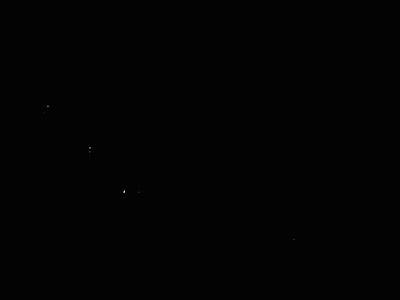Location: Saints Rest Beach, NB
Date Time: October 19, 2010 2300-0200hrs
Weather: -1 degree Celsius, very light breeze, high level wispy clouds.
Celestial Objects Observed: Moon(91% full), Jupiter and 4 Moons, Orion The Hunter, Cassiopeia, Taurus The Bull, Perseus, The Big Dipper, M45, M42, Capella, and Betelgeuse.
Report: The weather was cool and mostly clear so the observing conditions were favourable. The high level wispy clouds were not much of a factor, as when they covered the Jupiter-Moon conjunction, Perseus(location of Comet 103P/Hartley) was clear and vise versa.
Before the observing session, a sky chart was consulted for the whereabouts of Comet Hartley. According to the chart it was just east of the star Capella, which was halfway up in the sky at observing time. Did a protracted search for the comet with 20x80 binoculars. Observed some stars that could be a comet, but nothing that stood out enough for a confirmed sighting. Same could also be said of my next search for the comet with my 150 mm reflector with a 32mm eyepiece.
To have a successful sighting of a comet like this one, which is closest to earth today, and doesn't stand out amongst the background stars(with smaller scopes) one has to locate the area it is in and chart the background stars over a several day period. The star that moves is your comet.
Orion came up over the eastern horizon after midnight. It was very impressive as it hovered over Saint John, NB. Betelgeuse (Orion's left shoulder) was also observed. It showed up as a reddish disk.
Taurus was very prominent in the East as I started at 2300hrs. M45 also stood out very nicely, in the east.
Jupiter's weather belt showed up clearly as a faint red line that was in line with its 4 Moons.
The Moon was very bright and many of its craters and features showed up very well with the 16mm eyepiece.
Overall, this was an excellent session. Even though I didn't find Comet 103P/Hartley, the search did allow for a more thorough familiarization of the stars around Capella.
There were many very interesting things to observe on this night and some very nice pictures were taken. To see these pictures look to the preceding post.


























